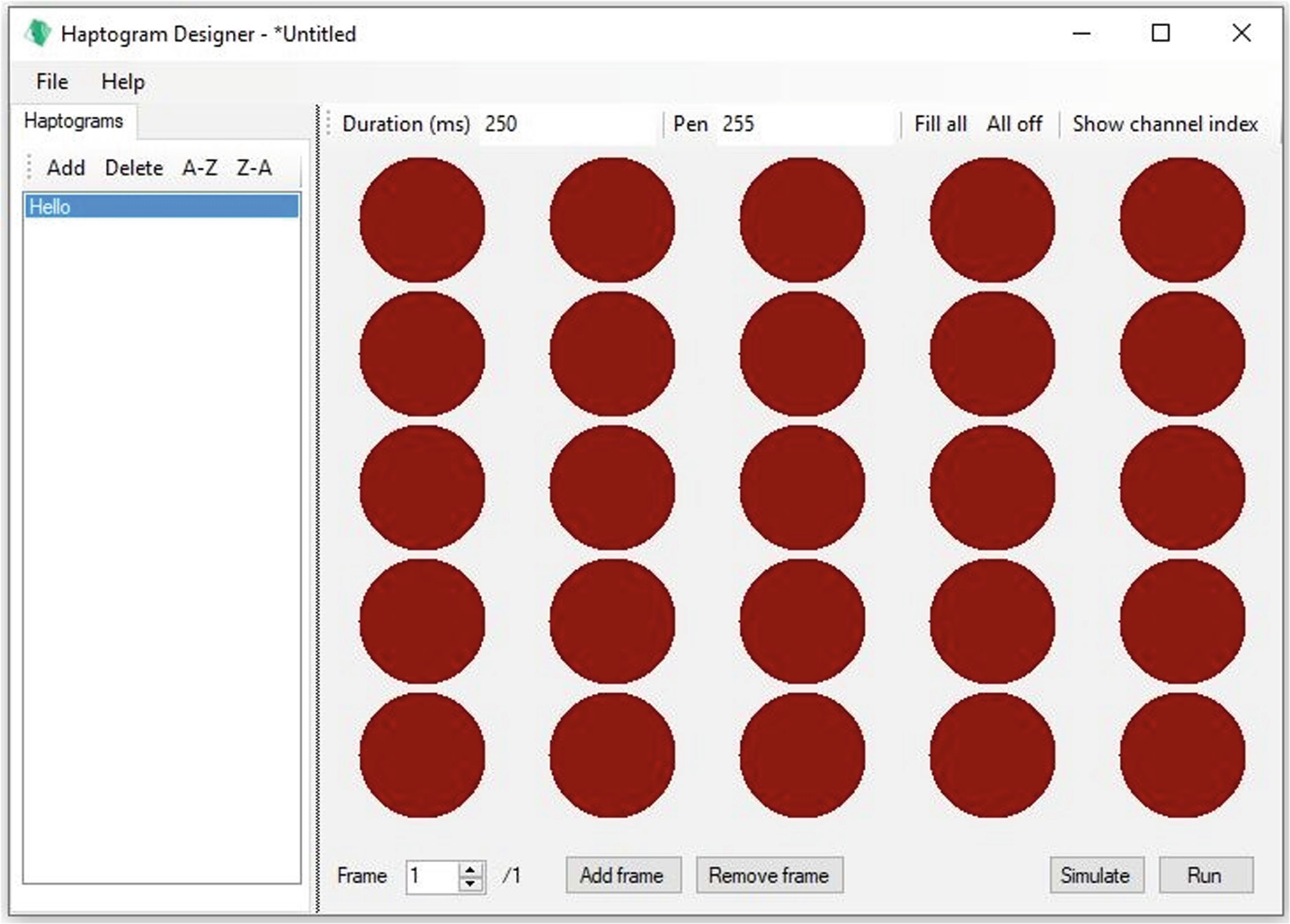HaptiDesigner

Tool Summary
| Metadata | |
|---|---|
| Release Yearⓘ The year a tool was first publicly released or discussed in an academic paper. | 2022 |
| Platformⓘ The OS or software framework needed to run the tool. | Windows |
| Availabilityⓘ If the tool can be obtained by the public. | Available |
| Licenseⓘ Tye type of license applied to the tool. | Unknown |
| Venueⓘ The venue(s) for publications. | UAHCI |
| Intended Use Caseⓘ The primary purposes for which the tool was developed. | Communication |
| Hardware Information | |
|---|---|
| Categoryⓘ The general types of haptic output devices controlled by the tool. | Vibrotactile |
| Abstractionⓘ How broad the type of hardware support is for a tool.
| Bespoke |
| Device Namesⓘ The hardware supported by the tool. This may be incomplete. | HaptiBoard |
| Device Templateⓘ Whether support can be easily extended to new types of devices. | No |
| Body Positionⓘ Parts of the body where stimuli are felt, if the tool explicitly shows this. | Torso |
| Interaction Information | |
|---|---|
| Driving Featureⓘ If haptic content is controlled over time, by other actions, or both. | Time |
| Effect Localizationⓘ How the desired location of stimuli is mapped to the device.
| Location-aware |
| Non-Haptic Mediaⓘ Support for non-haptic media in the workspace, even if just to aid in manual synchronization. | None |
| Iterative Playbackⓘ If haptic effects can be played back from the tool to aid in the design process. | Yes |
| Design Approachesⓘ Broadly, the methods available to create a desired effect.
| Direct, Additive |
| UI Metaphorsⓘ Common UI metaphors that define how a user interacts with a tool.
| Generic Menu |
| Storageⓘ How data is stored for import/export or internally to the software. | Custom XML |
| Connectivityⓘ How the tool can be extended to support new data, devices, and software. | None |
Additional Information
HaptiDesigner is a toolkit to create vibrotactile patterns or Haptograms on multiple actuators. Each Haptogram is composed of multiple frames that each specify which actuators are activated in that frame ,the intensity of vibration, the duration, and the pause between the end of that frame and the following one. These patterns are stored in a local database so they can be modified and reused.
For more information, please consult the 2022 Universal Access in Human-Computer Interaction paper or the GitHub repository.